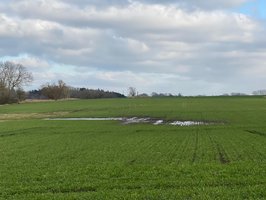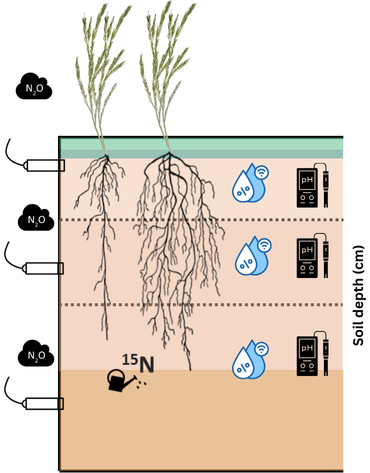Rooting N2O – Cropping strategies for mitigating GHG emissions in agricultural landscapes
The aim of this project is to identify the greenhouse gas emissions drivers from agricultural landscapes and investigate the complex interplay between crop roots, topography, soil characteristics and N2O emissions. For that, post-fertilization N2O emissions in perennial, winter and spring crops growing in both wet depression zones and ambient field conditions and monitoring root growth and soil biogeochemical gradients throughout the soil profile will be investigated. Through this multi-angled approach, the following questions will be addressed:
- What is the interplay between topographic wetness, crop type, and N2O emissions?
This question examines whether differences in topography and crop type influence N₂O emissions, with a focus on understanding if crop growth duration plays a role in mitigating emissions. - Which root traits are decisive for mitigating N2O emissions?
This question revolves around key root traits, such as root length density and rooting depth, using mini-rhizotron imaging, stable isotope tracers (¹⁵N and D2O), and root cores, to determine their correlation with N2O fluxes. - How is root activity modifying biogeochemistry in the soil profile?
This angle explores how root-induced changes in soil pH, oxygen, moisture, and nutrients at various depths (0–15 cm, 15–30 cm, 30–45 cm) relate to N2O emissions, integrating data from sensors and depth-specific measurements.





